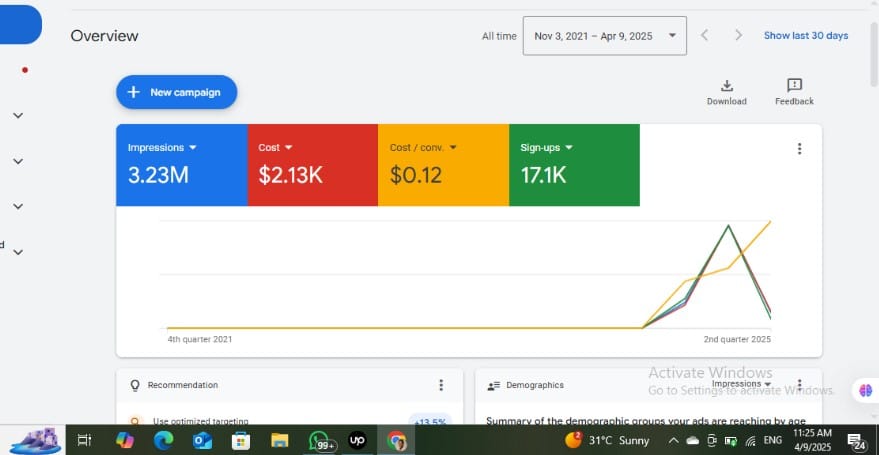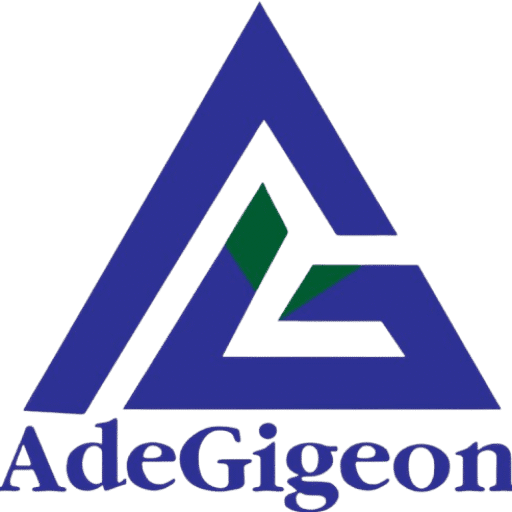A Practical Guide for E-commerce and Education Brands
Are google ads still worth it in 2025,YES. For businesses looking to generate predictable sales, attract high-quality leads, and scale their operations efficiently, Google Ads offers unmatched potential. Unlike organic methods that take time to gain traction, paid search ads connect you directly with users who are actively searching for solutions, products, or services like yours. When campaigns are carefully targeted, optimized, and measured, Google Ads can deliver measurable ROI, reduce wasted ad spend, and provide insights into customer behavior that other channels cannot. If you want expert help to set up and optimize your campaigns, check out our Google Ads services

In this guide, we’ll explore why Google Ads remains relevant, highlight common challenges faced by e-commerce and education brands, and provide practical strategies to make campaigns more effective. Whether you run an online boutique or a private school, this article will help you understand how to use Google Ads wisely in 2025.
Why Google Ads Remains Relevant in 2025
Digital marketing evolves rapidly, but Google Ads continues to dominate search-driven advertising. Many businesses ask, “Are Google Ads Worth It in 2025?”, and the answer lies in understanding its benefits and strategic use.
1. High-Intent Traffic
Unlike social media ads, where users scroll casually, Google Ads targets people actively searching for a product, service, or solution. For example, someone searching “best nursery near me” is more likely to enroll their child than someone scrolling through Instagram ads.
2. Measurable Results
Google Ads provides detailed metrics, such as:
- Click-through rate (CTR) – how many users click your ad
- Conversions – actual purchases, sign-ups, or inquiries
- Cost-per-acquisition (CPA) – cost to acquire a customer or lead
- Return on ad spend (ROAS) – revenue generated per dollar spent
This level of measurement allows businesses to optimize campaigns in real-time, ensuring money is spent efficiently.
3. Flexible Targeting
You can target audiences by:
- Location (city, state, country)
- Demographics (age, gender, income)
- Device type (mobile, desktop)
- Interests and search intent
This flexibility allows both small and large businesses to reach highly specific audiences with minimal wasted spend.
4. Quick Scalability
Once a campaign is performing well, it can be scaled quickly. Whether it’s increasing ad budget or expanding to new keywords, Google Ads allows you to grow predictably, unlike purely organic channels.
If you want expert help to set up and optimize your campaigns, check out our Google Ads services
Challenges Businesses Face with google ads
Even though Google Ads is powerful, many businesses wonder, “Are Google Ads Worth It in 2025?” Understanding common challenges and pain points is crucial to building campaigns that actually deliver strong ROI..
E-commerce & Fashion Brands
Pain Points:
- High cart abandonment: Users add products to their cart but fail to complete the purchase.
- Low website conversions: Traffic is high, but sales are inconsistent.
- Limited knowledge of tracking & funnels: Many brands don’t know which ads lead to actual purchases.
- Scaling difficulties: Without optimized campaigns, increasing ad spend doesn’t guarantee more sales.
Impact: These challenges often result in wasted ad spend, low return on investment, and frustration for business owners trying to grow their brands.
Education Providers
Pain Points:
- Low-quality leads: Ads may generate inquiries that do not convert into actual enrollments.
- Offline conversion tracking: Schools and course providers often struggle to track which ads resulted in enrollment.
- Reputation concerns: Marketing must maintain credibility while still driving results.
- Long sales cycles: Parents or learners may take time to decide, requiring multiple touchpoints.
Impact: Without proper tracking and strategy, education providers risk spending on campaigns that don’t deliver measurable results, while also affecting their reputation.
How Google Ads Can Solve These Problems

Google Ads is not just a tool for getting clicks—it’s a solution to specific business problems when used correctly.
1. Reduce Cart Abandonment (E-commerce)
- Implement remarketing campaigns to target users who left items in their carts.
- Use dynamic product ads to show the exact product a visitor viewed, increasing relevance.
- Offer incentives such as limited-time discounts or free shipping to encourage completion.
2. Track Offline Conversions (Education)
- Use offline conversion tracking to match inquiries to enrollments.
- Implement Google Lead Form Extensions to collect information directly from search ads.
- Create multi-touch attribution reports to see which keywords and campaigns drive real enrollments.
3. Improve Website Conversions
- Optimize landing pages for speed, mobile-friendliness, and clear calls-to-action.
- Conduct A/B testing to find which headlines, images, and forms convert best.
- Use conversion-focused content that answers user questions and builds trust.
4. Scale Predictably
- Once you identify top-performing campaigns, increase budgets gradually while monitoring ROAS.
- Expand to related keywords or additional geographic locations to capture more traffic.
- Integrate Google Ads with social media campaigns to create multi-channel funnels.
Practical Strategies for 2025
To maximize results from Google Ads, businesses should focus on strategy, execution, and measurement.
For E-commerce & Fashion Brands
- Audience Research: Know your ideal customers—age, location, interests, and buying behavior.
- Creative Optimization: Use high-quality visuals, storytelling, and product demos.
- Retargeting Campaigns: Target users who engage with your website or social media but haven’t purchased.
- Data-Driven Decisions: Track CTR, CPA, ROAS, and repeat purchase rates to refine campaigns.
- Funnel Integration: Combine Google Ads with email sequences, social media, and landing pages for a seamless experience.
For Education Providers
- Keyword Strategy: Target high-intent keywords like “best nursery near me” or “online coding course enrollment.”
- Trust Signals: Highlight testimonials, awards, and case studies in ads and landing pages.
- Lead Quality over Quantity: Focus on collecting high-quality inquiries rather than large numbers of unqualified leads.
- Track Conversions Accurately: Match leads to enrollments using offline tracking or CRM integration.
- Content-Rich Ads: Include short video tours, course demos, and parent/student testimonials to build credibility.
Common Challenges and Questions: Are Google Ads Worth It in 2025?

1. Leverage Multi-Channel Marketing
Combine Google Ads with other marketing channels:
- SEO: Organic search helps reduce ad dependency and lower overall CPA.
- Social Media: Instagram, TikTok, and LinkedIn complement search campaigns.
- Email Marketing: Follow up with leads to increase conversion rates.
2. Focus on Metrics That Matter
- CPA (Cost per Acquisition): How much it costs to get a sale or lead.
- ROAS (Return on Ad Spend): Revenue generated per dollar spent on ads.
- Conversion Rate: Percentage of visitors who complete the desired action.
- Repeat Purchase Rate / Enrollment Growth: Measures long-term success.
3. Create Tiered Campaigns
- Start with a small budget to test campaigns and creatives.
- Scale high-performing ads gradually while keeping an eye on ROAS.
- Experiment with different ad formats, like responsive search ads, video ads, and display campaigns.
4. Keep Content Relevant and Engaging
- For fashion brands, highlight trendy products, seasonal collections, and limited-time offers.
- For education, focus on course benefits, accreditation, and success stories.
- Always match ad copy to search intent for maximum relevance.
Real-World Examples
E-commerce Example
A boutique selling sustainable handbags ran Google Ads targeting “eco-friendly tote bags Lagos”. Using remarketing and product-specific ads, the boutique:
- Increased CTR by 42%
- Reduced cart abandonment by 28%
- Achieved a 3× ROAS
Education Example
An online coding bootcamp targeted “learn Python online fast” with lead form extensions and offline conversion tracking. Results included:
- 60% increase in qualified inquiries
- Reduced cost-per-lead by 35%
- Improved enrollment tracking and reporting accuracy
These examples illustrate that when campaigns are optimized for intent, Google Ads can produce measurable and profitable results.
If you want expert help to set up and optimize your campaigns, check out our Google Ads services
Who Benefits Most from Google Ads
E-commerce & Fashion Brands
- Boutique owners, D2C stores, and niche accessory brands.
- Businesses aiming to turn followers into customers.
- Brands looking to scale ad-driven revenue predictably.
Education Providers
- Private schools, online courses, vocational programs, and training centers.
- Organizations needing high-quality leads and measurable enrollments.
- Institutions that want to protect reputation while using paid marketing effectively.
Key Takeaways
- Google Ads is still relevant in 2025, especially for businesses seeking high-intent traffic and measurable ROI.
- Campaign success depends on audience targeting, tracking, content relevance, and multi-channel integration.
- E-commerce brands can reduce cart abandonment, increase sales, and scale reliably.
- Education providers can attract high-quality leads, improve enrollment tracking, and build trust with parents and students.
- Focusing on metrics that matter—CPA, ROAS, conversion rate—ensures ad spend is efficient and results-driven.
In short, Google Ads is not just about spending money—it’s about spending smartly, targeting effectively, and converting interest into tangible results.
FAQ Types of Google Ads
Search Ads
Text-based ads that appear in Google search results when users type relevant queries. They target people actively searching for products, services, or solutions, making them ideal for driving highly qualified traffic and immediate leads.
Display Ads
Visual banner or image ads shown across websites in Google’s Display Network. These ads help increase brand awareness, retarget previous website visitors, and reach audiences who may not be actively searching but fit your target profile.
Video Ads
Ads that play before, during, or after YouTube videos or across Google’s video partners. Video ads are perfect for storytelling, product demonstrations, tutorials, or building a strong brand presence in an engaging format.
Shopping Ads
Product-focused ads that display images, pricing, and store information directly in Google search results. These are highly effective for e-commerce brands, as users can see the product before clicking, often leading to higher purchase intent.
App Ads
Designed to drive mobile app installs or increase engagement within an app. These ads appear across Google Search, YouTube, Display Network, and Google Play, helping app developers reach users most likely to download or interact with their app
Discovery Ads
Visually rich ads appearing in Google Discover feeds, YouTube homepage, and Gmail promotions tab. They help brands reach users organically while they browse content, making them great for inspiring action or awareness even when users aren’t actively searching. ullamcorper mattis, pulvinar dapibus leo.
Smart Ads / Smart Campaigns
Automated campaigns where Google’s AI handles targeting, bidding, and ad placements. These campaigns are ideal for small businesses or beginners, as they simplify campaign management while still aiming for conversions or leads. ullamcorper mattis, pulvinar dapibus leo.
Local Ads
Ads that promote your physical business location, appearing in Google Maps, local search results, and nearby searches. Perfect for driving foot traffic, appointments, or visits from nearby potential customers.
. Performance Max
A newer all-in-one campaign type where Google uses automation and AI to serve ads across all channels—Search, Display, YouTube, Discovery, and Gmail. Performance Max campaigns focus on maximizing conversions or sales while giving advertisers broad reach and simplified management more
Related post

Micro-Influencer Marketing Nigeria
Discover how small Nigerian businesses can leverage Micro-Influencer Marketing Nigeria to connect with the right audience, boost engagement, and drive real sales. Learn practical steps to find local influencers, run effective campaigns, and grow your brand without breaking the bank.

SME Challenges in Nigeria
Discover how Nigerian SMEs in e-commerce, fashion, and education can overcome common growth challenges. With Adegideon’s SEO, Google Ads, and Meta Ads strategies, your business can boost visibility, attract quality leads, and drive predictable sales and enrollments.

Nigerian E-commerce Content Tips
Want your Nigerian e-commerce blog to actually sell? Discover Nigerian E-commerce Content Tips that attract the right audience, boost engagement, and turn readers into paying customers — all while keeping your content fun, relatable, and totally Naija-approved.

